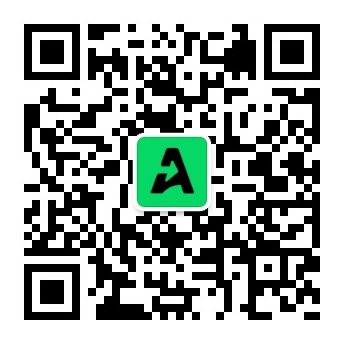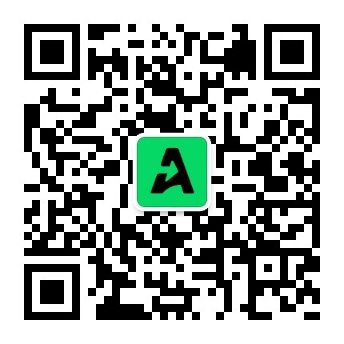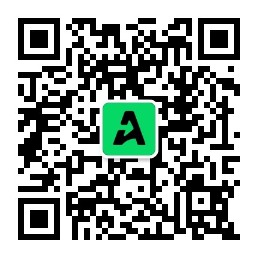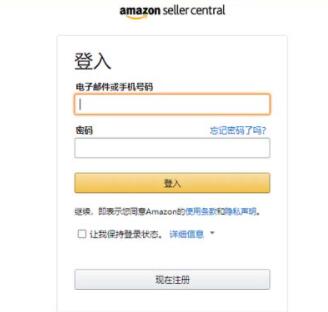倒计时12天!这份攻略带你玩转圣诞营销,轻松爆单!


2021年6 月8日,USPTO(美国专利商标局)商标审查副局长发布了一项示因命令(Show Cause Order),要求深圳Huanyee知识产权有限公司及其执行董事(以下称“被告”)说明为何不应对其违反USPTO规则和USPTO网站使用条款的行为实施制裁。被告于 2021年7月6日对此作出答复。经对被告的答复慎重考虑后,USPTO依然认为此前提议的制裁是可实施的。

Respondents assert that the USPTO is prohibited from making information concerning this administrative proceeding available for public review on its website and request that the USPTO remove postings and references to the Show Cause Order. Response at 4. Specifically, Respondents assert that “the Privacy Act absolutely prohibits disclosure of information concerning this matter” and the USPTO’s Systems of Records Notices (“SORNs”) “do not permit exceptions through routine uses, or otherwise, for this widespread dissemination.” Id. Respondents assertions are incorrect.
被告声称USPTO不应在其网站上公开此行政程序的信息以供公众审查,并要求 USPTO 删除帖子和示因命令。被告声称“隐私法绝对禁止披露有关此事的信息”,并且美国专利商标局的记录系统通知(“SORNs”)“不允许通过常规使用或其他方式为这种广泛传播提供例外。此说法是错误的。
Respondents, as foreign individuals and a foreign business entity, have no rights under the Privacy Act. The Privacy Act generally covers citizens of the United States and lawful permanent residents and only applies to records of such individuals. See 5 U.S.C. § 552a(a)(2) (stating that individual means “a citizen of the United States or an alien lawfully admitted for permanent residence”); St. Michael’s Convalescent Hosp. v. State of Cal., 643 F.2d 1369, 1371 (9th Cir. 1981). It “extends no rights to organizations or corporations.” Pub. Emps. for Env’t Responsibility v. EPA, 926 F. Supp. 2d 48, 55 (D.D.C. 2013); see also 5 U.S.C. §§ 552a(a)(2), (a)(4). Even if Respondents were entitled to rely on the Privacy Act, the Show Cause Order and the Response are covered by a routine use in the USPTO’s SORN for Trademark Application and Registration Records (COMMERCE/USPTO-26), namely “public disclosure” which includes making all categories of records2 available for access and download at the USPTO’s website “for a variety of business purposes related to determining eligibility of a mark for federal registration and enforcing trademark rights.” 85 Fed. Reg. 8847, 8848. Accordingly, it is appropriate to refer to the Show Cause Order and Response in this decision and for the USPTO to make those documents available to the public.
被告作为外国个人和外国企业,不享有《隐私法》下的权利。《隐私法》通常涵盖美国公民和合法永久居民,并且仅适用于此类个人。它“没有将任何权利扩展到组织或公司”。即使被告享有此权利,美国专利商标局的商标申请和注册记录 SORN 中的例行使用也涵盖了示因命令和答复,即“公开披露”,其中包括在USPTO的网站上提供所有类别的记录以供访问和下载,“用于与确定联邦注册商标的资格和执行商标权相关的各种商业目的。” 因此,USPTO向公众提供这些文件是合法的。
The Director also rejects Respondents’ related argument that the public availability of the Show Cause Order and its coverage by publications and blogs warrants termination of these proceedings or corrective action by the USPTO. Response at 4. The Response cites to 37 C.F.R. § 11.306, which prohibits practitioners participating in investigatory or litigation matters before the USPTO from making extrajudicial statements that will have a substantial likelihood of materially prejudicing an adjudicative proceeding in the matter. Response at 4. That rule does not apply to an administrative order issued by the USPTO. Furthermore, insofar as third-party reports containing allegedly erroneous statements about Respondents exist, the USPTO is not the publisher of those statements and owes Respondents no duty to take any corrective action.
商标局还驳回了被告的其他论点:即示因命令的公开可得性及其在出版物和博客中的报道,需要美国专利商标局终止这些程序或采取纠正措施。被告引用了法条37 C.F.R. § 11.306:禁止参与美国专利商标局调查或诉讼事务的从业人员作出法外陈述,这些陈述很可能对案件中的裁决程序产生重大影响。该规则不适用于USPTO发布的行政命令。此外,如果存在包含涉嫌对被告作出错误陈述的第三方报告,美国专利商标局不是这些陈述的发布者,那么被告无权采取任何纠正措施。

At all relevant times, the USPTO Rules have provided that only attorneys admitted to practice before the bar of the highest court of a U.S. state or jurisdiction (“U.S. licensed attorney”) may practice before the USPTO in trademark matters on behalf of others. 37 C.F.R. §§ 2.17(a), 11.1, 11.14(a); see also 5 U.S.C. § 500(b).4 Practicing before the USPTO in trademark matters includes all “law-related service[s] that comprehend[] any matter connected with the presentation to the Office . . . relating to a client’s rights, privileges, duties, or responsibilities under the laws or regulations administered by the Office for the . . . registration of a trademark.” 37 C.F.R. § 11.5(b). Individuals who are not U.S. licensed attorneys may not, on behalf of others, (1) give advice to an applicant or registrant in contemplation of filing a U.S. trademark application or application-related document; (2) prepare or prosecute any U.S. trademark application, response, or post-registration maintenance document; (3) sign amendments to applications, responses to Office actions, petitions to the Director, or request to change correspondence information; or (4) authorize any other amendments to an application or registration. 37 C.F.R. §§ 11.5(b), 11.14(b).
Huanyee is a China-based organization that advertises that it assists clients with registering trademarks in China, has filed more than 30,000 foreign trademark applications, including in the United States, and offers U.S. trademark registration services via its website.
Respondents are not authorized to make submissions to the USPTO on behalf of others in trademark matters. Ms. Zhang is not a U.S. licensed attorney, nor does Huanyee have any U.S. licensed attorneys on staff who supervise Respondents’ work.
The name “Yusha Zhang” and/or email addresses associated with Respondents appeared in the correspondence fields of more than 1,700 trademark applications and registrations naming different allegedly unrepresented applicants submitted through the USPTO’s Trademark Electronic Application System (“TEAS”), allegedly filed by the applicants between 2016 and 2019. The submissions primarily identified the mailing address for Huanyee and an email address within the domain huanyee.com. Further, Respondents registered several uspto.gov accounts and continued to file more than 14,000 more applications and other submissions on behalf of others during the past three years.
Huanyee宣称其协助客户注册商标,已提交超过 30,000 件国际商标申请,包括在美国,并通过其网站提供美国商标注册服务。
被申请人无权代表他人向美国专利商标局提交商标申请。张女士不是美国执业律师,Huanyee 也没有在职美国执业律师来监督被告方的工作。“Yusha Zhang”和与被告相关的电子邮箱出现在 1,700 多份商标申请和注册的通信字段中,这些申请和注册命名通过美国专利商标局商标电子申请系统(“TEAS”)提交的不同的据称无人代理的申请人,据称由美国专利商标局提交。提交的文件明确了huanyee的邮寄地址和huanyee.com内的电子邮箱。此外,在过去三年中,被告注册了多个 uspto.gov 帐户,并代表他人提交了14,000 多份申请和其他文件。
Despite being unauthorized to practice before the USPTO in trademark matters, Respondents engaged in such practice by counseling and advising clients in contemplation of filing trademark applications and other documents before the USPTO, preparing and prosecuting applications for U.S. trademark registrations, preparing and submitting arguments and amendments in trademark matters before the USPTO, and communicating directly with the USPTO on behalf of others.
The record establishes that Respondents engaged in unauthorized practice before the Office. The Response acknowledges that Respondents did so. See Response at 6 (stating that Respondents “plan[] to move past this and conform its conduct to the requisite USPTO regulations” by, among other things, endeavoring to “work with U.S. Trademark Counsel”) and Response at 8 (noting that Respondents “are already precluded and aver that they will no longer make filings”).
尽管无权在 USPTO 就商标事务进行执业,但被告仍从事此类业务,向客户提供咨询并建议其向USPTO提交商标申请和其他文件、准备和起诉美国商标注册申请、准备和提交论据和补正,并代表他人直接与美国专利商标局沟通。
记录表明,被告从事了未经授权的活动。被告在答复中承认这一行为。参见答复第6条:指出被申请人“计划通过这一点并使其行为符合 USPTO 法规”,其中包括“与美国商标顾问合作”和答复第8条:知道其 “已经被商标局除名,并且声称他们将不再提交申请”。
B. Providing false domicile addresses
Since August 3, 2019, the USPTO Rules have required that all applicants must provide and keep current the address of their domicile7 and that any foreign-domiciled applicant, registrant, or party to a proceeding must be represented by a U.S. licensed attorney in trademark matters before the USPTO. See 37 C.F.R. §§ 2.11(a), § 2.189.8 The USPTO relies on provided domicile information to make a determination regarding whether an applicant has complied with all requirements for registration, including that a foreign- domiciled applicant be represented by a U.S. licensed attorney. See 37 C.F.R. §§ 2.11, 2.32. Providing false, fictitious, or fraudulent domicile or attorney information in a trademark submission to the USPTO constitutes submitting a document for an improper purpose in violation of 37 C.F.R. § 11.18(b) and is subject to the sanctions and actions provided in 37.C.F.R. §s 11.18(c). See 37 C.F.R. § 2.11(e).
B.提供虚假住所地址
自 2019 年 8 月 3 日起,USPTO规则要求所有申请人必须提供并保持其住所地址的最新地址,并且任何外国住所的申请人、注册人或诉讼当事人必须由美国注册商标事务律师代表。美国专利商标局根据所提供的住所信息来确定申请人是否符合所有注册要求,包括外国住所申请人是否有美国执业律师代理。在向美国专利商标局提交的商标申请中提供虚假、虚构或欺诈的住所或律师信息将受到制裁和约束。
Apparently aware of this rule, Respondents adjusted their practice to provide false applicant domicile addresses to circumvent the rule. Using uspto.gov accounts controlled by Respondents, Respondents filed more than 4,500 applications and other submissions through TEAS in the name of various different juristic entities allegedly formed in the United States.
When USPTO examining attorneys began questioning the domicile information provided in these applications, Respondents provided a second false domicile address in most of them, either in response or via preliminary amendments.9 Respondents provided the same first and second domicile addresses across many unrelated applications, knowing the addresses were not in fact the named applicants’ actual domicile addresses.
The record establishes that Respondents repeatedly and knowingly provided false, fictitious or fraudulent domicile information to the USPTO. The Response does not address Respondents’ provision of false domicile addresses to the USPTO.
被告显然也知道这一规则,因此以提供虚假的申请人住所地址来规避该规则。使用其uspto.gov 帐户,被告以在美国成立的各种不同法人实体的名义通过TEAS提交了4,500 多份申请和其他意见书。
当USPTO审查员开始质疑这些申请中提供的住所信息时,被申请人通过答复或初步修正在大多数申请中提供了第二个虚假住所地址。在明知这些地址实际上并不是商标申请人的实际住所地址的情况下,被告在许多不相关的申请中提供了相同的第一和第二住所地址。
记录表明,被告多次故意向美国专利商标局提供虚假、虚构或欺诈的住所信息。答复中并未提及其向美国专利商标局提供虚假住所地址的问题。
C. Impermissibly entering signatures of others
The U.S. trademark laws and the USPTO Rules require that an application for U.S. registration of a trademark must be supported by a verified statement, signed by the mark owner or a person properly authorized to sign on behalf of the owner. 15 U.S.C. §§ 1051(a)(3), (b)(3); see also 37 C.F.R. §§ 2.33, 2.193(e). Additionally, at all relevant times, the USPTO Rules have required that any signatures on documents submitted to the USPTO in a trademark matter must be personally signed by the named signatory. 37 C.F.R. § 2.193(a); Trademark Manual of Examining Procedure (“TMEP”) (July 2021 version)10 § 611.01(b). That is, the signature must be either handwritten in permanent ink by the person named as the signatory or the signatory must be the one who enters his or her electronic signature on the document (i.e., personally enter the combination of letters, numbers, spaces and/or punctuation that the signatory has adopted as a signature
person may not delegate the authority to sign trademark-related submissions, and no one may sign the name of another, electronically or otherwise. See e.g., In re Dermahose Inc., 82 USPQ2d 1793, 1796 (TTAB 2007); In re Cowan, 18 USPQ2d 1407 (Comm’r Pats. 1990);
In re Lou, Proceeding No. D2021-04 at *9-12 (USPTO May 12, 2021). If a declaration or verification is improperly executed as a result of being signed by a person other than the named signatory or a person determined to be an unauthorized signatory, it is invalid and the averments cannot be relied upon to support registration. See, e.g., Ex parte Hipkins, 20 USPQ2d 1694, 1696-97 (BPAI 1991); In re Cowan, 18 USPQ2d at 1409.
C.不允许输入他人签名
美国商标法和美国专利商标局规则要求商标在美国注册的申请必须得到经过验证的声明的支持,声明由商标所有人或经适当授权代表所有人签字的人签署。此外,在所有相关时间,USPTO规则都要求提交给USPTO的商标事宜文件上的任何签名必须由指定的签名人亲自签名。也就是说,签名必须由被指定为签名人的人以永久墨水手写,或者签名人必须是在文件上输入其电子签名的人(即亲自输入字母、数字、空格和空格的组合)。或签字人直接在电子表格的签字块中作为签字采用的标点符号)。任何人不得授权签署与商标相关的提交,也不得以电子方式或其他方式签署他人的姓名因由指定签字人以外的人或被认定为未经授权签字人的人签字而导致声明或验证不正确的,该声明或验证无效,且该声明不能作为注册的依据。
Under the USPTO Rules, documents in trademark matters must be investigated and read thoroughly before signing and filing because any person who presents a trademark submission to the USPTO is certifying, among other things, that “[a]ll statements made therein of the person’s own knowledge are true, all statements made therein on information and belief are believed to be true” and that, “[t]o the best of the party’s knowledge, information and belief, formed after an inquiry reasonable under the circumstances, . . . the paper is not being presented for any improper purpose” and “[t]he allegations and other factual contentions have evidentiary support” and “[t]he denials of factual contentions are warranted on the evidence.”37 C.F.R.§11.18(b)(1)-(2); 37 C.F.R.§2.193(f). Violations of 37 C.F.R.§11.18(b) may jeopardize the validity of the application or registration, and may result in the imposition of sanctions under 37 C.F.R.§11.18(c). 37C.F.R.§2.193(f).
Respondents filed more than 15,000 trademark applications and other trademark submissions with the USPTO believed to contain signatures in support of verifications or declarations that were entered by Respondents, not the named signatories.
Respondents used the uspto.gov accounts they controlled to file multiple different documents through TEAS, often within minutes and sometimes seconds of each other, that each purported to be directly signed by different named signatories located in different geographic regions.
根据 USPTO 规定,在签署和提交之前必须彻底调查和阅读有关商标事务的文件,因为向 USPTO 提交商标申请的任何人除其他外证明“所有声明中的个人信息是真实的,即其中关于信息和信念的所有陈述都应是真实的”,并且“据当事人所知、所悉和所信,是在合理的情况下进行调查后形成的。该文件不是出于任何不当目的而提交的”和“指控和其他事实论点有证据支持”和“事实论据的否认是有根据的。
被告向美国专利商标局提交了超过 15,000 件商标申请和其他商标申请,据信这些材料包含支持由被告而非指定签署人输入的验证或声明的签名。
被告使用他们控制的 uspto.gov 帐户通过 TEAS 提交多个不同的文件,通常在几分钟甚至几秒钟内相互提交,每个文件都声称由位于不同地理区域的不同指定签署人直接签署。
A number of submissions by Respondents referenced in the Show Cause Order contain both a signature of a U.S. licensed attorney with offices located in the United States, and a signature of an applicant with a domicile address in China that were entered directly in the TEAS form apparently at the same time.11 Such submissions were filed between March 5, 2021 and May 6, 2021, when essentially all noncitizen travel from China to the United States was suspended. See U.S. Presidential Proclamation 9984 (suspending entry into the United States for all noncitizens physically present in China, effective January 31, 2020).
The submissions were often filed in rapid succession bearing purported direct signatures of individuals with addresses in diverse geographic regions, making it impossible that the named signatories personally entered their signature on the submissions.
示因命令中提到的许多被告提交的材料都包含一名在美国设有办事处的美国执业律师的签名,以及一个在中国有住所地址的申请人的签名,这些签名显然是直接输入到 TEAS 表格中的。此类提交是在 2021 年 3 月 5 日至 2021 年 5 月 6 日之间提交的,当时基本上所有从中国到美国的非公民旅行都被暂停。
提交的文件大多是快速连续提交的,同时带有位于不同地理区域的个人签名,因此这不可能是指定的签名人在提交的文件上的亲自签名。
The record establishes that Respondents repeatedly violated the USPTO Rules concerning signatures and certifications and caused invalid declarations and verifications to be submitted in thousands of applications. The Response concedes that Respondents entered the signatures of others on filings submitted to the USPTO. Response at 4 (stating that Respondents “were unaware of the signature requirements”) and 7 (stating that Respondents were “unfamiliar with the filing requirements and did not fully understand the signature requirements under 37 C.F.R. § 2.193” at the time they made the submissions to the USPTO). The only conclusion on this record is that the USPTO cannot rely on any signature appearing in any submission provided to the Office by Respondents and, moreover, every declaration supporting an application or other proof of use submitted by Respondents is invalid.
该记录表明,被告一再违反美国专利商标局关于签名和证明的规则,并导致在数千份申请中提交了无效的声明和验证。被告在答复中承认在提交给美国专利商标局的文件中输入了其他人的签名。答复第4条(表示被申请人“不知道签名要求”)和第7条(表示被申请人“不熟悉提交要求并且不完全理解 37 CFR § 2.193 下的签名要求”)。该记录的唯一结论是,美国专利商标局不能信赖被申请人提交给该局的任何文件中出现的任何签名,此外,被申请人提交的每一份支持申请或其他使用证明的声明都是无效的。
D. Misuse of uspto.gov accounts and TEAS
Users must register for and use a uspto.gov account to access electronic forms and submit trademark documents through TEAS. A party who uses USPTO systems, including uspto.gov accounts and TEAS, is bound by the Terms of Use for USPTO websites. See https://www.uspto.gov/terms-use-uspto-websites. An individual is responsible for all activities that occur under his/her registered USPTO.gov account, with such account being limited to use by the individual to whom the account is registered. The sharing of online USPTO accounts violates the USPTO website terms of use.
Respondents registered and shared access to at least three separate uspto.gov accounts including the name of Yusha Zhang.
Respondents used these accounts to make submissions on behalf of others through TEAS in thousands of trademark matters.
Given that many of the submissions were often filed through TEAS in rapid succession from the various accounts, it is clear that the accounts were used by multiple people, not just Ms. Zhang. The record establishes that the uspto.gov accounts and TEAS were used by Respondents to commit multiple violations of USPTO Rules and website terms of use. The Response does not address Respondents’ misuse of the USPTO’s systems.
D.滥用 uspto.gov 账户和 TEAS
用户必须注册并使用uspto.gov帐户才能访问电子表格并通过TEAS提交商标文件。使用USPTO系统(包括uspto.gov帐户和TEAS)的一方受USPTO网站使用条款的约束。个人对其注册的USPTO.gov帐户下发生的所有活动负责,此类帐户仅限于注册该帐户的个人使用。在线USPTO帐户的共享违反了USPTO网站使用条款。
被告注册并共享了对至少三个独立的uspto.gov账户的访问权限,其中包括Yusha Zhang的名字。
被告使用这些帐户通过TEAS代表他人提交了数千件商标事宜。鉴于许多提交的申请往往是通过TEAS从各个账户快速连续提交的,很明显,这些账户被多个人使用,而不仅仅是张女士。该记录表明,被告使用uspto.gov帐户和TEAS多次违反USPTO规则和网站使用条款。被告人的答复中并未回应此问题。

The Response expresses disagreement “with many of the assertions in the Show Cause Order” (Response at 5) but provides no evidence to rebut them. The Response ultimately concedes that Respondents violated the USPTO Rules and website terms of use but seeks to excuse the violations and avoid sanctions by challenging the administrative sanctions procedure and authority to issue sanctions. The Response also argues that sanctions should not be imposed because Respondents were unfamiliar with the requirements of the USPTO Rules, did not willfully violate them, and are taking actions to correct the issues raised. As discussed below, the arguments are unpersuasive and fail to establish why any of the sanctions outlined in the Show Cause Order should not be imposed.
其答复表达了“对示因命令中的许多断言”的不同意见,但没有提供反驳证据。被告最终承认违反了美国专利商标局规则和网站使用条款,但试图通过质疑行政制裁程序和发布制裁的权力来为违规行为开脱并避免制裁。此外还辩称,不应对其实施制裁,因为被告不熟悉美国专利商标局规则的要求,没有故意违反这些要求,并且正在采取行动纠正提出的问题。如下所述,这些论点没有说服力。
A. A hearing is not required
Respondents argue that these proceedings are improper based on the incorrect assumption that the USPTO’s authority to sanction Respondents is limited to that specified in 35 U.S.C. § 32, which requires opportunity for a hearing in proceedings to suspend or exclude an agent, attorney, or person recognized to represent applicants before the Office from further practice before the Office for incompetence, disreputability, gross misconduct, or for failure to comply with the regulations established under 35 U.S.C. § 2(b)(2)(D).13 Response at 3-4 (citing 35 U.S.C. § 32). Specifically, the Response suggests that no agency sanctions are permissible before the USPTO offers an in-person hearing before an administrative law judge at a time and place convenient for Respondents, and that sanctions must be limited to misconduct discovered within certain time constraints. Id. Respondent’s reliance on 35 U.S.C. § 32 is misplaced for at least the following reasons.
A.不需要听证
被告辩称,这些程序是不适当的,这是基于错误的假设,即 USPTO 制裁被申请人的权力仅限于 35 U.S.C. 第 32 条,这需要有机会在诉讼程序中举行听证会,以暂停或排除代理人、律师或被认可在商标局代表申请人的个人/公司的后续执业,因为无资格、坏名誉、严重不当行为或未能遵守既定的规定。具体而言,其答复声称在 USPTO 在行政法法官面前,在被告合适的时间和地点举行面对面听证会之前,不允许对机构进行制裁,并且制裁必须仅限于在特定时间限制内发现的不当行为。被告把35 U.S.C. 第 32 条用错了地方,原因如下。
First, by the statute’s terms, the required hearing is limited to proceedings to suspend or exclude a practitioner from further practice before the Office.14 This is not a proceeding to suspend or exclude an attorney, agent, or person recognized to represent others before the Office from further practice before the Office.15 Neither Ms. Zhang nor any employee of Huanyee has been recognized to practice before the Office pursuant to the USPTO’s representation rules.16 See 37 C.F.R. §§ 11.1, 11.14(a).
首先,根据法规的条款,听证会仅限于暂停或排除从业者在办公室的进一步执业的程序。这不是暂停或排除律师、代理人或被认可代表他人的程序。根据美国专利商标局的代理规则,张女士和Huanyee的任何员工均未被认可在该办公室执业。
Second, 35 U.S.C. § 2(b)(2)(A) provides the Office with separate broad authority to establish regulations governing the conduct of proceedings in the Office. See also 15 U.S.C. § 1123 (repeating the authority specifically for trademark matters). Congress also provided the Director with the power and responsibility to manage the Office and for the registration of trademarks. See 35 U.S.C. § 3(a) and (b)(2)(A). The current administrative proceeding concerns addressing improper submissions made by Respondents in trademark matters and Respondents’ repeated noncompliance with the USPTO Rules and website terms of use by subjecting Respondents to appropriate actions or sanctions pursuant to the Director’s inherent and express authority in 35 U.S.C. § 3(a)-(b) and 37 C.F.R. § 11.18(c). Cf. The Last Best Beef, LLC v. Dudas, 506 F. 3d 333, 340-341 (4th Cir. 2007) (holding that the USPTO “has inherent discretion . . . to manage its own docket”).
第二,35 U.S.C. § 2(b)(2)(A) 赋予该办公室单独的广泛权力,以制定管理该办公室程序进行的法规。国会赋予局长管理该局和商标注册的权力和责任。当前的行政程序涉及解决被申请人在商标事务中的不当提交以及被申请人一再不遵守美国专利商标局规则和网站使用条款的问题,局长有权对被申请人采取适当的行动或制裁。
Third, 37 C.F.R. § 11.18(c), cited in the Show Cause Order, sets forth the procedure followed in these administrative proceedings. See Show Cause Order at 8. The rule provides that such sanctions and actions as deemed appropriate may be imposed “after notice and reasonable opportunity to respond.” 37 C.F.R. § 11.18(c).18 Respondents have been given such notice by the Show Cause Order, which explained the rationale for sanctions, and Respondents have been given an opportunity to respond by showing why the sanctions proposed in the Show Cause Order should not be imposed. Respondents submitted a response, which has been considered. In short, no hearing is required to provide sufficient due process before imposing appropriate sanctions.
第三,Show Cause Order 中引用的37 C.F.R. § 11.18(c)对此类行政程序作出规定。该条款规定,可以在“通知和合理的答复后”实施适当的制裁和行动。示因命令中已向被告发出此类通知,其中解释了制裁的理由,并且被告能通过说明不应实施示因命令中提议的制裁来做出回应。被告已提交了一份回应,该回应已被考虑。简而言之,在实施适当制裁之前,无需举行听证会即可提供充分的正当程序。
B. The Director’s authority to sanction Respondents has been properly delegated to the Commissioner for Trademarks
Respondents suggest that the Director cannot delegate the authority to sanction Respondents to the Commissioner for Trademarks or provide for further delegation of that authority. These arguments also lack merit.
As noted above, the authority for these proceedings derives from 35 U.S.C. § 3(a)-(b) and 37 C.F.R. § 11.18(c). Inherent in the Director’s authority to manage the Office and the registration of trademarks is the authority to sanction those filing trademark submissions in violation of the USPTO Rules. See 35 U.S.C. § 3(a)-(b).
B. 局长制裁被告的权力已适当授权给商标专员
被告声称局长不能将制裁答辩人的权力下放给商标专员,也不能规定进一步下放该权力。这些论点也毫无依据。
如上所述,这些程序的授权来自 35 U.S.C. § 3(a)-(b) 和 37 C.F.R. 第 11.18(c) 条。局长管理该局和商标注册的固有权力是制裁那些违反 USPTO 规则提交商标申请的人。
Moreover, pursuant to 35 U.S.C. §3(a)-(b), the Director has explicitly delegated to the Commissioner for Trademarks the authority to impose such sanctions or actions permitted under 37 C.F.R. § 11.18(c) as deemed appropriate in trademark matters and to otherwise exercise the Director’s authority in trademark-related matters, and also has provided that such authority may be further delegated by the Commissioner. See generally Delegation of Authority to Issue Sanctions in Trademark Proceedings (January 14, 2020); TMEP § 1701.
此外,根据 35 U.S.C. §3(a)-(b),局长已明确授权商标专员实施 37 C.F.R. 允许的此类制裁或行动。§ 11.18(c) 被认为适用于商标事务,并以其他方式在商标相关事务中行使局长的权力,并且还规定这种权力可以进一步授权专员。参见一般性授权在商标诉讼中发布制裁(2020 年 1 月 14 日)。
The statutory provision setting forth the powers and duties of the Office specifically provides that the powers vested in the USPTO or its Director may be delegated “as the Director may determine.” 35 U.S.C. § 3(b)(3); see also 37 C.F.R. §§ 1.750, 1.181(g), 2.146(h), and 11.1 (each expressly noting the power of the Director to delegate authority). Re-delegations are presumptively permissible absent affirmative evidence of a contrary congressional intent. See U.S. Telecom Ass’n v. FCC, 359 F.3d 554, 565 (D.C. Cir. 2004).
In this matter, the Commissioner for Trademarks is issuing this final order for sanctions pursuant to his delegated authority to act for the Director in matters involving trademarks, including those arising under 37 C.F.R. § 11.18. The Deputy Commissioner for Trademark Examination Policy acted pursuant to the same delegated authority in issuing the Show Cause Order.
规定美国专利商标局权力和职责的法定条款明确规定,授予美国专利商标局或其主任的权力可以“根据局长的决定”进行授权。在没有违背国会意图的情况下,重新授权被推定是允许的。
在此问题上,商标专员将根据其在涉及商标的事务中代表局长行事的授权发布此最终制裁命令。商标审查副专员根据同一授权发布示因命令。
D.Lack of familiarity with the USPTO Rules and promised corrective steps cannot shield Respondents from sanctions
Respondents provided no argument or evidence to rebut the showing supporting sanctions in the Show Cause Order. Instead, Respondents argue sanctions are not warranted because they were “unfamiliar with the filing requirements and did not fully understand the signature requirements under 37 C.F.R. § 2.193 until engaging counsel” and are taking corrective actions. Response at 8; see also Response at 4 (Respondents were “unaware of the signature requirements”).
Respondents further argue that such ignorance of the law means that their conduct was not willful, and as such, their “mistakes” should be correctable and no sanctions imposed, especially those that would impact the applicants. As discussed below, these arguments do not provide valid reasons for not imposing sanctions here.
D.不熟悉 USPTO 规则和承诺的纠正措施不能使被告免受制裁
被告没有提供任何论据或证据来反驳示因命令中的制裁。相反,受访者认为制裁是不合理的,因为他们“不熟悉备案要求,在聘请律师之前没有完全理解签名要求”,并正在采取纠正措施。被告进一步辩称,对法律的无知意味着他们的行为不是故意的,因此,他们的“错误”应该是可以纠正的,并且不会受到制裁,尤其是那些会影响商标申请人的制裁。如下所述,这些论点并未提供不应实施制裁的正当理由。
First, those participating in the trademark registration process are presumed to be aware of the governing regulations and are expected to comport themselves appropriately. Cf. Patagonia, Inc. v. Azzolini, 109 USPQ2d 1859, 1862 (TTAB 2014) (pro se party bears the responsibility of following rules of practice in Trademark matters before the Board); Hurley Int’l LLC v. Volta, 82 USPQ2d 1339, 1345 (TTAB 2007) (“the fact that applicants allegedly misunderstood a clear and unambiguous requirement . . . does not change [the Trademark Trial and Appeal Board’s] finding of fraud”).
首先,那些参与商标注册过程的人被假定为了解管理规定并行为合规。当事人有责任遵守商标事务的实践规则。申请人若称误解了官方要求,并不会改变商标审判和上诉委员会对欺诈的裁决。
Second, Respondents’ claimed ignorance of the law provides no defense or excuse for avoiding sanctions. See, e.g., U.S. v. Int’l Min. & Chem. Corp., 402 U.S. 558, 563 (1971) (“The principle that ignorance of the law is no defense applies whether the law be a statute or a duly promulgated and published regulation.”); Barlow v. U.S., 32 U.S. 404 (1833) (stating “[i]t is a common maxim, familiar to all minds, that ignorance of the law will not excuse any person, either civilly or criminally”); In re Whittelsey, 83 F.2d 894 (C.C.P.A. 1936) (“It is a familiar rule that ignorance of the law is not an excuse for a course of action.”). Furthermore, any applicants who chose Respondents as their representative may be held accountable for the acts and omissions of their chosen representative. See, e.g., Pioneer Inv. Servs. Co. v. Brunswick Assoc. Ltd. P’ship, 507 U.S. 380, 396-97 (1993) (reciting the principle that generally “clients must be held accountable for the acts and omissions of their attorneys”).
Third, Respondents conduct need not be willful to be sanctionable. Whether the improper conduct was willful or negligent is one of many possible considerations that may be utilized in determining an appropriate action or sanction under 37 C.F.R. § 11.18(c). See 73 Fed. Reg. 47650, 47653 (Aug. 14, 2008).
其次,被告声称对法律的无知不能为逃避制裁提供任何辩护或借口。无论法律是成文法还是正式颁布和公布的法规,无知不是辩护的原则都适用。此外,任何选择被告作为其代理的商标申请人应要为其选择的代理的行为负责。
第三,被告的行为不必是因为故意才应受到制裁。不当行为是故意还是疏忽是可用于确定适当行动或制裁的众多可能考虑因素之一。
Although willfulness is not necessary to justify sanctions, the present record amply supports finding that Respondents willfully violated the USPTO Rules. Respondents describe themselves as a “China-based intellectual property firm that specializes in domestic and foreign intellectual property matters” that “is registered with the Trademark Office of China National Intellectual Property Administration,” has “created relationships with a number of agencies and law firms in over one hundred countries, themselves being a trademark agency,” and whose business includes “trademark, patent, copyright application.” Response at 2. As a registered trademark agent in China that works with agencies and law firms in other countries to secure protection of client intellectual property rights globally, Respondents clearly knew that the trademark registration process in the United States, like in China and any other country, is legal in nature and is governed by laws and regulations. Moreover, having been involved in filing submissions in more than 15,000 trademark matters before the USPTO, Respondents were routinely presented with terms, conditions, averments, and warnings on each form submitted via TEAS and with applicable legal requirements in Office actions received from the USPTO, such that they would be expected to understand they were involved in a legal proceeding, governed by statutes and regulations.
尽管故意并不是制裁的必要条件,但目前的记录充分支持认定被告故意违反美国专利商标局规则这一事实。被告将自己描述为“在中国国家知识产权局商标局注册”的“专注于国内外知识产权事务的中国知识产权事务所”,“与多家代理机构和律师事务所建立了关系在一百多个国家,自己是一家商标代理机构”,其业务包括商标、专利、版权申请。作为在中国注册的商标代理人,与其他国家的代理机构和律师事务所合作以确保在全球范围内保护客户的知识产权,受访者清楚地知道美国的商标注册流程与中国和任何其他国家一样,是合法的,受法律法规制约。此外,在向美国专利商标局提交了超过 15,000 件商标事项的申请后,被申请人通常会在通过TEAS提交的每张表格上看到条款、条件、声明和警告,以及从美国专利商标局收到的审查文件中适用的法律要求,因此被告应知其参与了受法律法规约束的法律程序。
The majority of Respondents’ submissions before the USPTO were new applications filed via TEAS, which require a verified statement alleging, among other things, that the facts set forth in the application are true. See 37 C.F.R. §§ 2.33(a)-(b). The application form begins with a requirement for the filer to identify his or her role (i.e. the applicant or an attorney) and ends with explicit averments requiring acknowledgement and a declaration signed by a proper signatory pursuant to 37 C.F.R. § 2.193. Respondents routinely misrepresented their role and misidentified the filer of the applications as either the applicant or an attorney, even though the filer was neither. Respondents then improperly entered the signature of the named signatory on declarations explicitly stating that “false statements and the like are punishable by fine or imprisonment, or both, under 18 U.S.C. § 1001, and that such willful false statements and the like may jeopardize the validity of the application or submission or any registration resulting therefrom.” See 37 C.F.R. § 2.20; see also 37 C.F.R. § 11.18(b)(1); Chutter, Inc. v. Great Mgmt. Grp., LLC, 2021 USPQ2d 1001 at *19 (TTAB 2021) (“A declarant is charged with knowing what is in the declaration being signed, and by failing to make an appropriate inquiry into the accuracy of the statements the declarant acts with a reckless disregard for the truth.”), appeal filed, No. 22-1212 (Fed. Cir. Nov. 30, 2021). Verifications or declarations that are not signed by the named signatory are invalid and thus cannot support registration.
被告向美国专利商标局提交的大多申请都是通过TEAS提交的新申请。官方要求新申请提供声明,即声称申请中陈述的事实是真实的。申请表以要求申报人确定他或她的身份(即申请人或律师)开始,并以要求确认签署人的声明结束。被告谎报了他们的身份,并将申请的提交人误认定为申请人或律师,事实上两者都不是提交人。然后,被告在声明中不正当地输入了指定签字人的签名,明确声明“虚假陈述等可处以罚款或监禁,并且此类故意的虚假陈述等可能危及申请或提交或由此产生的注册的有效性”。未经指定签署人签署的验证或声明无效,因此注册无效。
Respondents also frequently provided false domicile addresses for the named applicants in the applications, representing that applicants were domiciled in the United States when they were actually domiciled in China, in violation of 37 C.F.R. § 2.11. Even after receiving Office actions that questioned the applicants’ domicile and specifically advised Respondents of the requirement for representation of foreign-domiciled applicants by a U.S. licensed attorney, Respondents either provided another false address to circumvent that requirement or indicated that clients were represented by U.S.-licensed attorneys by entering those attorneys’ names, signatures, and bar information on documents that Respondents prepared and filed themselves.
被告还经常为申请中指定的申请人提供虚假住所地址,表示实际居住在中国的申请人居住在美国。即使在收到对申请人的住所提出质疑并特别告知答辩人由美国持牌律师代表外国住所的申请人的要求的官方通知后,被告要么提供另一个虚假地址来规避该要求,要么通过在自己准备和提交的文件上输入这些律师的姓名、签名等信息来表明客户由美国执业律师代理。
Given these circumstances, Respondents could not reasonably or in good faith have believed that their actions before the USPTO were proper or permissible, even if they were unaware of the precise text of the USPTO Rules that prohibited their actions. At best, Respondents acted in reckless disregard for whether their actions were prohibited, and at worst, they engaged in a coordinated and intentional effort to avoid the requirements of the USPTO Rules in order to obtain U.S. trademark registrations. Under either view, Respondents’ submission of thousands of trademark documents containing false representations of fact upon which the USPTO relied in determining entitlement to registration was willful and constitutes fraud. See, e.g., In re Bose Corp., 580 F.3d 1240, 1243, 91 USPQ2d 1938, 1939 (Fed. Cir. 2009) (“Fraud in procuring a trademark registration or renewal occurs when an applicant knowingly makes false, material representations of fact in connection with his application.”); Chutter, 2021 USPQ2d 1001 at *13 (holding that “willful” includes reckless behavior and “as a matter of law that reckless disregard satisfies the requisite intent for fraud on the USPTO in trademark matters”); Fuji Med. Instruments Mfg. Co., Ltd. v. Am. Crocodile Int’l Grp., Inc., 2021 USPQ2d 831 (TTAB 2021) (finding fraud where an attorney signed the declaration at issue). Respondents’ acts may not be corrected or cured. See, e.g., Univ. of Ky. v. 40-0, LLC, 2021 USPQ2d 253 (TTAB 2021); G&W Labs. Inc. v. GW Pharma Ltd., 89 USPQ2d
1571, 1573 (TTAB 2009) (“fraud cannot be cured merely by deleting from the registration those goods…on which the mark was not used at the time of the signing of a use-based application…”); cf. Therasense, Inc. v. Becton, Dickinson and Co., 649 F. 3d 1276, 1288- 89 (Fed. Cir. 2011) (explaining that inequitable conduct renders the patent unenforceable and “cannot be cured by reissue or reexamination”) (internal citations omitted).
鉴于这些情况,即使不知道禁止其行为的 USPTO 规则中的确切官文,被告也不能认为他们在 USPTO 之前的行为是适当的或被允许的。被告根本不顾其行为是否被禁止而采取鲁莽的行动,或者,他们进行了协调和主观努力,以规避美国专利商标局的要求来进行美国商标注册。无论是哪一种行为,被告提交的数千份包含虚假事实陈述的商标文件都是故意的,构成欺诈。被告的行为不可通过重新发布或复审得以纠正。



我们建了一个亚马逊卖家交流群,里面不乏很多大卖家。
现在扫码回复“ 加群 ”,拉你进群。
热门文章
*30分钟更新一次































